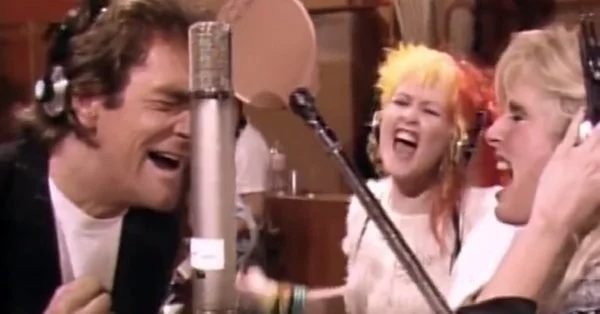Review: The Greatest Night in Pop
I know that this is a music technology blog and that I don’t usually do reviews, but I recently had the pleasure of watching an amazing documentary on Netflix titled The Greatest Night in Pop and I LOVED it. The documentary captures one incredible night in January of 1985 when dozens of the 80’s biggest music stars gathered late at night in Los Angeles after the AMA Awards Show to record We Are The World - a song that benefited people in Ethiopia who were experiencing a terrible famine at the time. What I loved most about the documentary, and the reason I felt that I needed to share the review here on this blog, is that the focus of the film is the process of writing and recording one song. It is simply wonderful and as someone who was 15 years old at the time, I vividly remember when it was released. Here is the official trailer:
The film is told mostly through a collection of interviews and footage of the evening, with Lionel Richie as the main narrator. Artists like Bruce Springsteen, Huey Lewis, Smoky Robinson, Cyndi Lauper. Sheila E, and Kenny Loggins lent a hand recalling memories of that evening. The event was inspired by Bob Geldof’s hit song Do They Know It’s Christmastime At All and the effort was led by none other than Harry Belafonte. Enlisting the help of Quincy Jones as the producer and both Michael Jackson and Lionel Richie as songwriters, famed music manager Ken Kragen started to call all of the musical artists that would be appearing at that years AMA Music Awards, which were hosted by Lionel Richie, as trying to coordinate the schedules of that many artists would have simply been impossible otherwise. They founded a group called USA for Africa, and to date they have raised over $100 million to aid families in Africa without access to food, clean water, and other essentials. For those of you who don’t know what the end result was, here is the official video of the song:
What I love most about the film is that is accurately documents the entire process of creating a song - from the actual song writing process, complete with original demo tapes and musical sketches to the stressful and long process of actually recording the song in one night. To hear from the actual recording engineer, Humberto Gatica, to the camera man who told a story about Waylon Jennings leaving the session after it was suggested that they sing parts of the song in Swahili, is like having an inside peek into one of the most amazing musical gatherings in history. Seeing the process is what is so amazing. Watching Lionel Richie teach the song, Quincy Jones trying to “herd cats”, and the many artists trying multiple takes to get their small solos just right is what I found so compelling. My favorite moment is when Bob Dylan needed to record his part. If you watched the video above you’ll notice that Bob looked a little out of it. He truly had no idea what to sing when his time came to record. He then asks Stevie Wonder for help. Stevie brings him over to the piano and literally imitates Bob’s voice and sings what he suggests Bob actually sing for his part. It was incredible. There was Stevie Wonder singing just like Bob and improvising the melody that Bob would eventually record.
Another one of my favorite moments is when Huey Lewis, Cyndi Lauper and Kim Carnes are recording their famous section of the song. The cameras capture some great moments here, including when Cyndi’s many necklaces and bracelets were being picked up by the microphone, Huey Lewis’ incredibly powerful vocals, and the amazing 3 part harmony they came up with right there on the spot. It’s really awesome.
I cannot recommend watching this film highly enough. There is some colorful language throughout so it’s probably not appropriate to show the entire film to your students, but selecting a few clips would be really inspiring in my opinion. Whether you are a musician, recording engineer, educator or just a fan of the song, The Greatest Night in Pop is Must See TV.
Did you see the film? What did you think? Feel free to share your thoughts.

